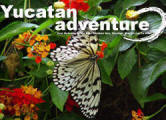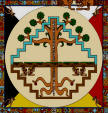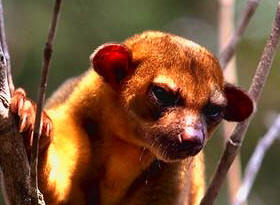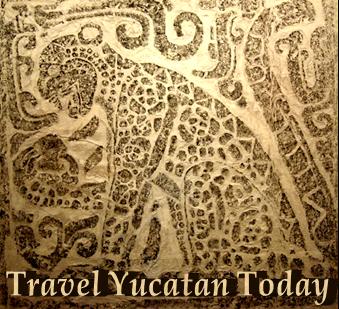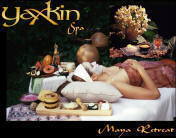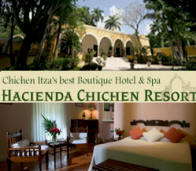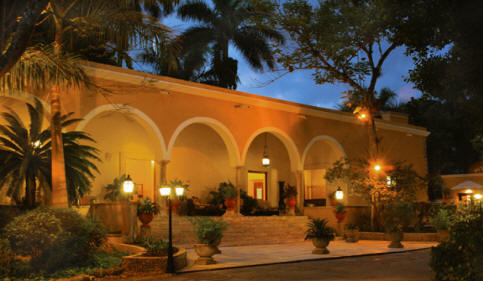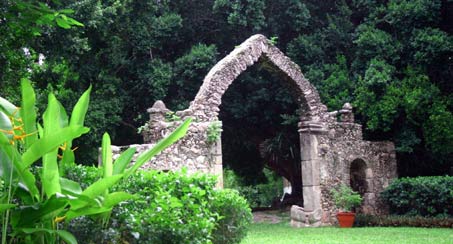|
|
||||
|
|
. |
|||
|
|
||||
|
Yucatan Adventure:
Sponsored Site
Yucatan Adventure proudly
supports the social work programs
MAYA
FOUNDATION
For more information on Sponsored Site:
SAVE THE MAYA JUNGLE
Sponsored Site:
Sponsored Site:
Yucatan Adventure
|
"I am an enthusiast by nature and so completely did I give myself to my work in the Yucatan that some of my contemporaries spoke of me as impractical," he wrote in his 1932 memoir, People of the Serpent. "I have squandered my substance in riotous explorations and I am altogether satisfied.". Thompson was born in 1857, and grew up in Worcester, Massachusetts. He spent his summers on Cape Cod in Falmouth, Mass., where, as local legend has it, his father, Josiah, built one of the first vacation cottages. Josiah was in the brick trade and later moved the family's summer residence to West Falmouth, lured by the rich clay deposits he found there. He built a brick kiln and a lofty house. During one of his summers on the Cape, Thompson fell in love with a ship captain's daughter, Henrietta T. Hamblin. The couple married in 1883 and settled in Falmouth, but that was soon to change. In 1885, Stephen Salisbury III, a Worcester resident and son of one of the richest men in the United States, asked Thompson to join him for dinner. Salisbury had read the Popular Science Monthly magazine article by Thompson in which he theorized that the Mayan ruins were the remains of the civilization that sprang from the lost continent of Atlantis. After the meal, Salisbury made Thompson a startling offer: Would the West Falmouth man be willing to move to the Yucatan to seek out ancient Mayan sites and artifacts and conduct archaeological digs on his behalf? Senator George Frisbie Hoar, who was also at the dinner, promised Thompson a job as American Consul to the Yucatan. A few weeks later, Thompson, Henrietta, and their newborn daughter boarded a ship for the Yucatan, beginning what would become a 40-year adventure, one that would take him to the magical Maya city of Chichen Itza, Yucatan, Mexico, where the Maya Cosmo-vision plays a very important role in the urban design of its temples and plazas. Thompson spent 40 years studying Maya and their ruins. He lived closely with the Maya, learning their language, traditions and religion. He also made several significant anthropological discoveries. In 1893, he spent several weeks at Labna and Uxmal making molds so that recreations of buildings from those sites could be erected for the 1893 Columbian Exposition. Thompson also discovered how the Maya were able to store water in areas where there were no cenotes, lakes or rivers using small, underground cisterns called chaltunes. He also found numerous Maya ruins previously thought lost, including the city of Xkichmook. For reasons unknown today, the Maya abandoned Chichen Itza around 1250, and the city fell into ruin. Four hundred thirty-nine years later the new American Consul, Edward Thompson, visited Chichen Itza. His biographer, T.A. Willard, described how the explorer reached the ruined city in the middle of the night, "in the saddle, dozing over the head of a somnambulant horse." Thompson's Mayan guide woke him and pointed ahead. "I raised my eyes and became electrically, tinglingly awake," Thompson supposedly told Willard, the prose becoming even more purple. "There, high-up, wraith-like, in the waning moonlight, loomed what seemed a Grecian temple of colossal proportions atop a great steep hill." This was Thompson s first look at the dominant architectural feature of Chichen Itza, the massive pyramid of Kukulcan. Willard's book, The City of the Sacred Well, was written in 1926, long after that first visit. Thompson claimed that Willard had greatly embellished his tale. The book helped to make Chichen Itza a household name, and Thompson famous. "Oh Lordy, what he makes me say and do," the explorer wrote a colleague shortly after the book came out, "May heaven help me." Thompson's instincts proved correct, for Willard's exaggerations would eventually drive him from Mexico.
Thompson devised an ingenious method to get unlimited access for his archaeological investigations in 1894: he purchased the Hacienda Chichen property state where some of Chichen Itza's majestic Mayan ruins are found. Thompson restored the Hacienda Chichen main Casco as his home and cattle ranch, nowadays this property is owned and operated by Belisa Barbachano and Bruce Gordon, as a unique green boutique hotel with an impressive commitment to preserve Yucatan's wildlife: fauna (animals) and flora (habitat, plants) of its vast private Maya Jungle Reserve; visit our article Yucatan Wildlife to enjoy a brief introduction of many animal endemic species found there. Going back to Thompson's story: Five years later he was the overseer of 45 servants and their respective families, to whom he became known as "Don Eduardo." In his spare time, he planted fruit trees and excavated the Maya ruins of Chichen Itza finding significant archaeological discoveries. In 1903 Thompson came up with his most audacious archaeological project. The ancient Maya had built Chichen Itza next to a large sink hole filled with water called a cenote. The cenote was believed sacred, a portal to the gods, and according to one early Catholic cleric, Maya from all over Mesoamerica would visit it to throw tributes and human sacrifices. Thompson persuaded Charles Bowditch of Peabody Museum at Harvard and Stephen Salisbury to finance an exploration of the Sacred Cenote. The Sacred Cenote proved a difficult challenge to explore. This sunken pool was some 80 feet below ground level, and surrounded by steep cliffs. There was no easy way to reach the water's surface, and if one made it there, no way to investigate its depths. Thompson was undeterred. He imported a sturdy crane that supported a cable with a large dredging bucket. "For days the dredge went up and down, up and down, interminably, bringing up muck and rocks, muck and more muck," Thompson recalled years later. Occasionally the bucket would bring up small shards of Mayan pottery, but that did little to assuage his growing doubt. Just when he was about to give up, the dredge brought up two hard, waxen balls, clearly made by human hands. They turned out to be small globes of fragrant resin called pom that, according to ancient legend, were burned to send prayers up to the Maya gods. The discovery of the sacred incense energized Thompson and he redoubled his efforts with the dredge. Soon it was bringing up dozens of ancient artifacts, including many items of low-grade gold, copper and jade. The dredge also recovered several skeletons, which in his mind confirmed that the well had been the scene of human sacrifice. Thompson knew there had to be small items, probably made of gold or jade, that were slipping through the teeth of the dredge. He hired a professional diver in Boston to teach him how to wear a heavy diving suit and descend into the depths. He shipped two suits and requisite air pumps to Chichen Itza and taught his Mayan workers to operate the equipment. At 50 years of age, Thompson dove more than 60 feet to the bottom of the Sacred Cenote. There was zero visibility, and the only way to explore was by touch, feeling along the bottom. The work was exceedingly dangerous, but Thompson and his crew found even more artifacts. These, too, were shipped to the Peabody. In 1910, after six seasons, Thompson concluded his explorations of the Sacred Cenote. In 1923, Don Eduardo revealed to a correspondent from the New York Times that he had made what the reporter later described as "the most important find of archaeological objects ever made in the Americas."
The New York Times story described the importance of the objects
from an archaeological viewpoint, but downplayed their monetary value.
Not so the biographer of Thompson, T. A. Willard. In City of the
Sacred Well, published in 1926, Willard greatly exaggerated the
value of the artifacts. When Mexican officials read the book, the
government ordered the hacienda seized, including Chichen Itza, and
filed suit for 1.3 million pesos.
You may stay at Edward Thompson's own
cottage guestrooms or personal Master Suite
Yucatan's Wildlife: Our World, Our Mission Yucatan's Flora: Exotic Flowers, Trees, Fruits, Plants, Vines, etc. We hope you find our Online Volunteer Magazine's articles interesting and full of learning fun. Yucatan Adventure welcomes article, news, travel contributions, and ideas on how to support the Maya Foundation In Laakeech A.C. efforts to help the Mayan Communities nearby Chichen Itza, Yucatan, Mexico.
Contact us now to request articles you would like to read in our website.
|
|||
|
|
||||
